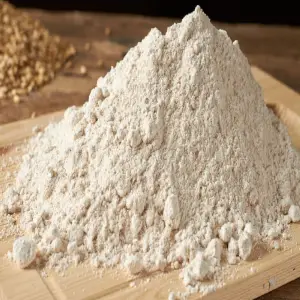Introduction of Food Grade Xanthan Gum
Food Grade Xanthan Gum refers to a specific type of xanthan gum that meets the safety and purity standards required for consumption in food products. It is manufactured under strict conditions to ensure it is free from harmful contaminants and is suitable for use in food processing.
Key Characteristics of Food Grade Xanthan Gum
1. Purity and Safety
Food grade xanthan gum is produced in compliance with food safety regulations, such as those set by the FDA (U.S. Food and Drug Administration) and EFSA (European Food Safety Authority).
It is tested for purity and free from harmful chemicals or contaminants, ensuring it meets safety standards for human consumption.
It is Generally Recognized As Safe (GRAS) by the FDA when used in food applications.
2. Manufacturing Process:
Food grade xanthan gum is produced by fermenting sugars (from sources like corn, soy, or wheat) with the bacterium Xanthomonas campestris. The fermentation process is tightly controlled to produce a clean, high-quality product.
After fermentation, the xanthan gum is dried, milled into a fine powder, and packaged in a way that prevents contamination.
3. Functionality in Food Products
Thickening: It is used to thicken sauces, gravies, soups, and beverages, providing a smooth texture without changing the flavor of the product.
Stabilizing and Emulsifying: It helps prevent ingredients like oil and water from separating in products such as salad dressings, mayonnaise, and dairy products (e.g., ice cream).
Gluten-Free Baking: In gluten-free recipes, food grade xanthan gum is essential to provide the structure, elasticity, and texture that gluten normally provides in baked goods.
Suspension Agent: It helps keep solid particles suspended in liquids, such as in fruit juices, smoothies, or spice suspensions.
4. Approved Usage Levels
The amount of food grade xanthan gum used in food products is regulated to ensure that it is safe for consumption. Typically, it is used in concentrations of 0.1% to 1% of the total weight of a product, depending on the application.
5. No GMO Concerns (Non-GMO Available)
Some food grade xanthan gum may be produced from genetically modified (GMO) sources, such as corn. However, non-GMO xanthan gum is also available for consumers and manufacturers looking for non-GMO certified ingredients.



Uses of Food Grade Xanthan Gum in Foods
1. Beverages: As a stabilizer in fruit juices, smoothies, and soft drinks.
2. Sauces & Dressings: To improve texture and prevent separation of ingredients.
3. Baked Goods: Particularly in gluten-free recipes, to improve dough texture and provide elasticity.
4. Ice Cream & Dairy Products: To prevent ice crystallization and improve texture.
5. Confectionery: In jelly candies, to control texture and provide a smooth, uniform consistency.
6. Ready-to-Eat Meals: To maintain the consistency and prevent the separation of ingredients in frozen or shelf-stable foods.






Precautions for Food Manufacturers Using Food Grade Xanthan Gum
1. Control of Usage Amount: Food grade xanthan gum should be used according to the recommended dosage, typically between 0.1% and 1%. Overuse may result in overly thick products or digestive discomfort.
2. Dissolution and Stirring: Xanthan gum needs to be fully dissolved in water and should be kept from clumping. It is best to stir evenly during use to ensure proper dispersion and effectiveness.
3. Source of Raw Materials: Ensure the food grade xanthan gum meets standards and is free from harmful substances or allergens (such as soy or wheat).
4. Storage Conditions: Store xanthan gum in a dry, low-humidity environment, avoiding direct sunlight, to prevent moisture absorption and clumping.
5. Product Testing: Before large-scale production, conduct product tests to ensure compatibility of xanthan gum with other ingredients and verify it does not affect the food’s taste or texture.
6. Health and Safety: While food grade xanthan gum is generally safe, ensure the final product complies with relevant food safety standards and is suitable for consumer consumption.

Advantages of Chempora in Supplying Food Grade Xanthan Gum
Chempora offers the following advantages in providing Food Grade Xanthan Gum:
1. Guaranteed High Quality: The xanthan gum provided by Chempora meets food safety standards, ensuring it is free from harmful substances or allergens, making it suitable for food processing.
2. Stable Supply Chain: Through a global supply network, Chempora ensures continuous and reliable supply to meet large-scale customer demands.
3. Technical Support: Chempora offers professional technical consulting and application support to help customers achieve optimal results in food processing.
4. Strict Quality Control: Chempora employs a rigorous quality management system during production to ensure that each batch of xanthan gum meets high-quality standards.
5. Competitive Pricing: Chempora offers competitive pricing while ensuring high product quality, helping customers improve production efficiency and reduce costs.
